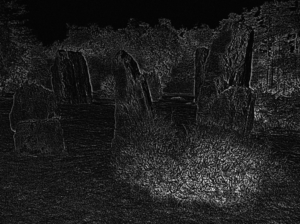Of fairies and little people
By Sir William Muskrat, esq.
There is quite a confusion on the true nature of what commoneers call fairies. Nineteenth and twentieth centuries stories tend to depict them as cute flying little things. Sometimes they are with magical power to grant wishes or make gifts (see “fairy godmother, scam of a century” by Harold K. Trifle).
Some other times, they appear childish and quite entertaining, although totally harmless (see “Tinkerbell, the libel trial” by Lord Ephaestus Caernaevon the IIIrd)
Of course, none of these portraits, amplified by some outrageous movies, are true. Fairies are immortal beings who used to wander around the Earth far before Humans ( or even Elves, for that matter). They live in small communities, called Sidhes, but some of them are quite solitary. They have different shapes, and usually appear to Humans as some beautiful specimes of their own kind The Fae folk are in fact out of time the way we concieve it, which sometimes gives the impression that they have some power over it. This difference of perception is often a source for great misunderstandings between the two species (see “The Rapture of Sir Edwin Collingwood” by Lady Edmee H.Collingwood)
Fairies have a natural ability to magic. One of their most well known power is the famous Glamour, which allows them to make others see them the way they actually want them to. This specific ability has generated some doubts about the true appearance of Fairies (see “The True Masquerade” by Seamus Bertold McFawn)
Fairies have one true King and Queen, but they are divided in factions often opposing each other: the Seelie and the Unseelie. Some suggest that this division is in fact a game to trick Humans (see “Good Fae, Bad Fae, the rules of the game” by Drustella Drawddydd)
Little Folk are often associated to fairies. If it is true that they share common traits (like their relation to time), there are actually hundreds of species of magical creatures regrouped under the generic term of “little folk”, which are in no way related to Fairies. It is true however that most of the Little Folk have a historical allegiance to the King and Queen of the Fae (see “The Timeless Pact” by Barnaby Foothill)
In most 21th century human societies, Fairies are considered as a myth, which is exactly what they wish. Humans have destroyed a huge part of the Fairies’ natural habitat (see “the Deforestation of the West” by Hannibal Attila Lumberjack) so now they tend to blend in, observe, and often play tricks, since it is also part of their Fae nature.
